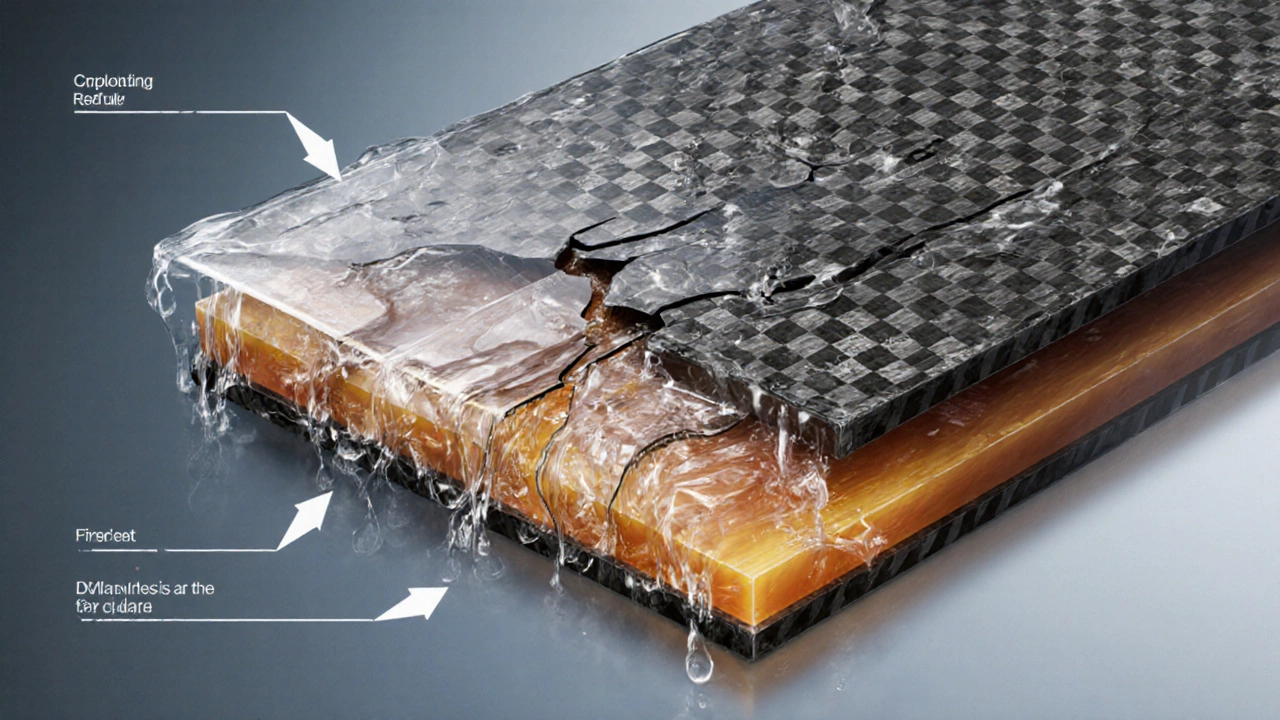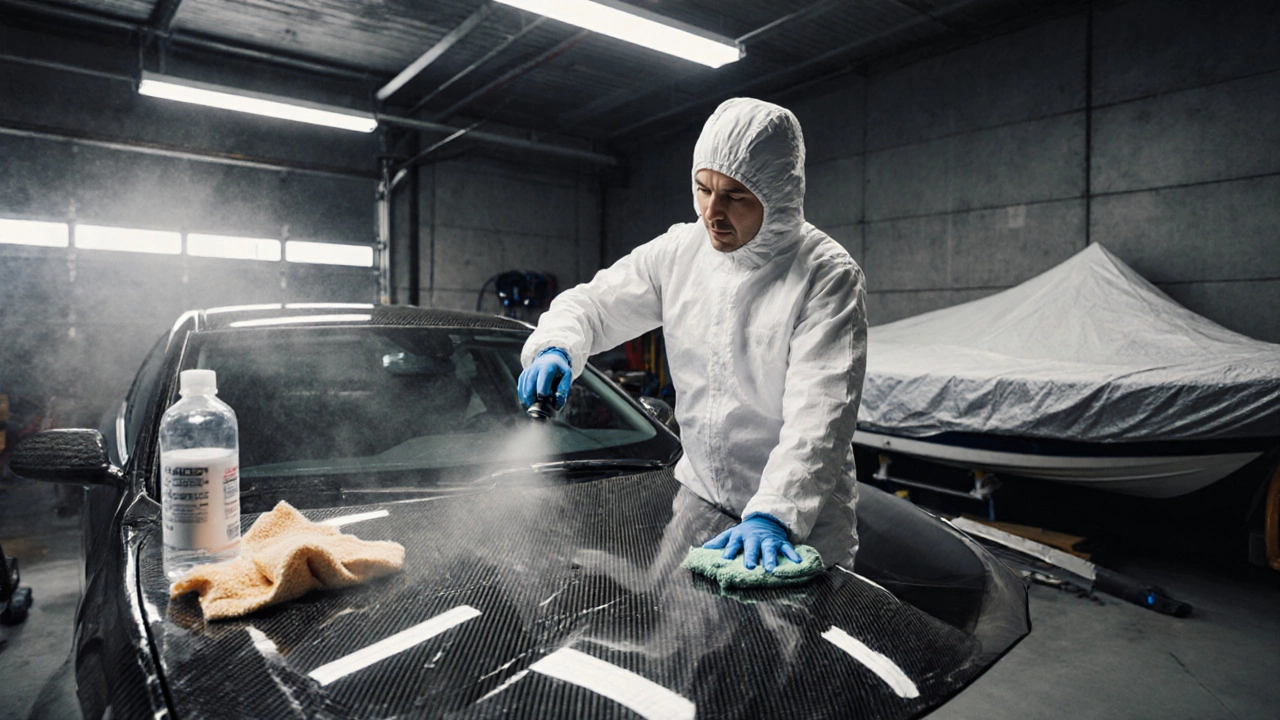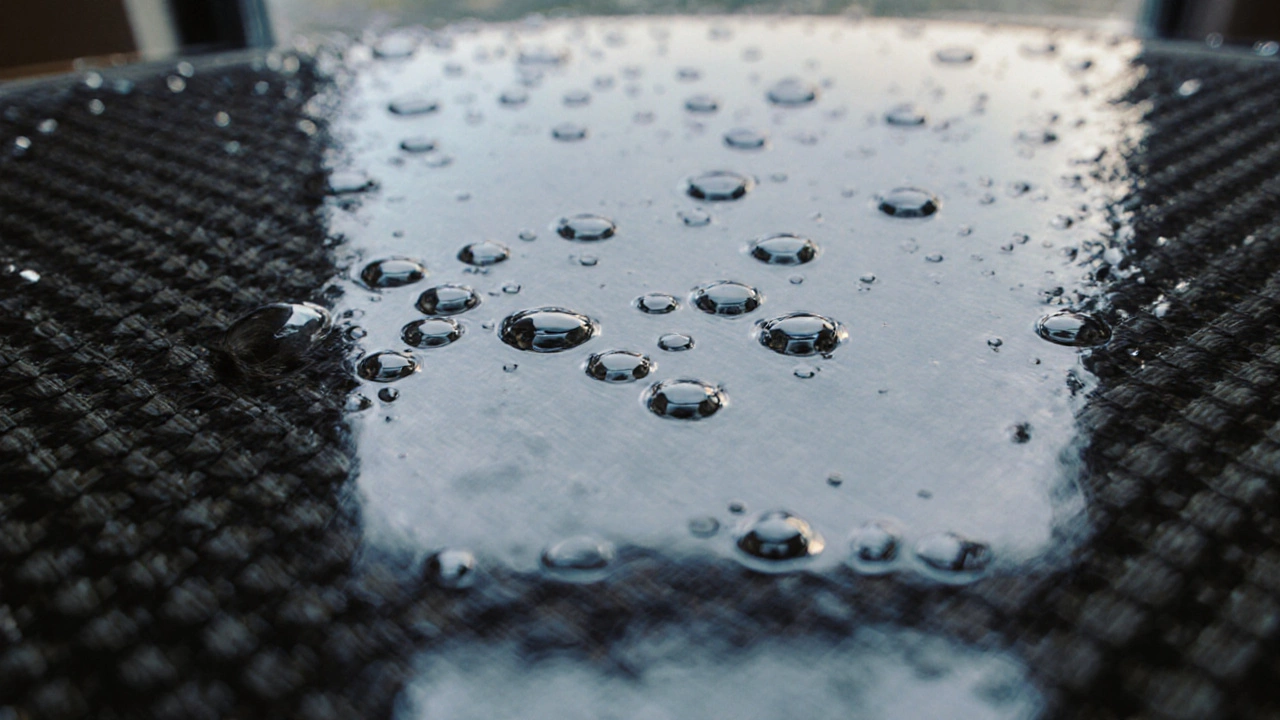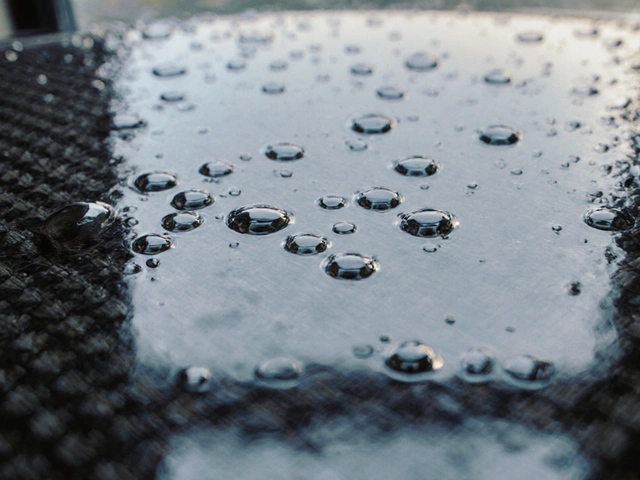Carbon Fiber Moisture Impact Calculator
Input Parameters
Adjust the following parameters to see how moisture affects carbon fiber properties.
Expected Impact on Carbon Fiber Properties
Ever wondered if a splash of rain could ruin your carbon‑fiber hood or a boat’s hull? The short answer: water itself isn’t a super‑villain, but prolonged exposure can sneakily weaken the material if you don’t treat it right. Below we break down what actually happens when carbon fiber gets wet, why some parts survive while others don’t, and how you can keep your carbon‑fiber components in top shape.
What carbon fiber actually is
When we talk about carbon fiber, we’re talking about a carbon fiber is a high‑strength, low‑weight reinforcement made of thin strands of carbon atoms arranged in a crystal lattice. These strands are woven into fabrics and then soaked with a resin matrix - typically an epoxy - that holds the fibers together and transfers loads between them.
How water interacts with carbon‑fiber composites
Pure carbon fibers themselves are virtually water‑impermeable, but the resin that binds them isn’t. Water (or moisture) can diffuse into the epoxy, especially if the composite has micro‑cracks or unfinished edges. This process is called moisture absorption and can happen faster in humid climates or when the part is submerged.
When water molecules slip into the resin, they cause it to swell slightly. This swelling creates internal stresses that can weaken the bond between fiber and resin, a phenomenon known as delamination - the layers start to separate from each other.

What wetness does to mechanical properties
The most noticeable impact is on tensile strength - the maximum pulling force the material can withstand before breaking. Studies from the aerospace sector show a 5‑10% drop in tensile strength after 30days of continuous immersion at 45% relative humidity.
Stiffness, measured as the modulus of elasticity, also dips. A typical carbon‑fiber lay‑up might lose 2‑4% of its modulus after soaking, which translates to slightly more flex under load. For high‑performance car panels, that extra flex can raise the risk of aerodynamic gaps or panel vibration.
| Property | Dry (Typical) | Wet (After 30days @ 45% RH) |
|---|---|---|
| Tensile Strength | 4,000MPa | ~3,600MPa (‑10%) |
| Modulus (Stiffness) | 230GPa | ~220GPa (‑4%) |
| Weight | 1.6g/cm³ | 1.6g/cm³ (unchanged) |
| Impact Resistance | High | Slightly reduced (≈‑5%) |
Real‑world scenarios where moisture matters
Automotive panels: Carbon‑fiber hoods, roofs, and spoilers on supercars are usually sealed with clear coats. If the coating chips, rain can reach the resin, leading to localized soft spots over months.
Marine applications: Boat hulls made from carbon‑fiber composites are constantly submerged. Manufacturers use specially formulated, low‑water‑absorption resins and add protective gel coats to mitigate the issue.
Aerospace parts: Aircraft wing spars use carbon‑fiber laminates that are pre‑cured in controlled environments. Their stringent moisture‑control procedures keep absorption under 0.1% by weight, far below the threshold where performance degrades.

How to protect carbon‑fiber parts from water damage
Prevention is simpler than fixing a compromised part. Here’s a practical checklist you can follow:
- Apply a protective coating - clear polyurethane or marine‑grade gel coat creates a waterproof barrier over the resin.
- Inspect for damage - look for chips, scratches, or exposed edges. Even a tiny nick can become a moisture gateway.
- Clean with mild soap - avoid harsh solvents that can degrade the coating. Rinse with soft water and dry with a microfiber cloth.
- Use sealants on joints - bolts and fasteners often expose underlying composite. Apply a silicone‑based sealant around them.
- Store in a dry environment - if you’re keeping a carbon‑fiber spoiler in a garage, keep humidity low (below 50%).
If your part has already absorbed water, the best remedy is to dry it slowly in a controlled environment (around 30°C with low humidity) for 24‑48hours. Rapid heating can cause thermal stresses and lead to warping.
Do you need to replace wet carbon‑fiber parts?
Not always. Minor moisture uptake often reverses after proper drying, especially if the coating remains intact. However, if you notice visible delamination, a soft “squishy” feel, or a drop in structural rigidity, it’s time to consider repair or replacement.
Repair methods include:
- Remove the damaged area and sand back to clean resin.
- Lay fresh carbon‑fiber fabric and infuse with epoxy.
- Re‑coat the repaired section with a clear protective finish.
Professional shops can perform these repairs, but for high‑performance or safety‑critical components (like suspension links), replacement is usually recommended.
Frequently Asked Questions
Will a quick rain shower damage carbon‑fiber panels?
A brief rain shower won’t cause immediate damage as long as the clear coat is intact. The coating repels water, preventing it from reaching the resin.
Can I wash my carbon‑fiber roof with a pressure washer?
Yes, but keep the pressure below 2bar (30psi) and avoid directing the stream at seams. High pressure can chip the protective coating and expose the resin.
Does salt water affect carbon‑fiber more than fresh water?
Salt accelerates corrosion of any metallic fasteners and can penetrate micro‑cracks faster, but the carbon fibers themselves remain unaffected. The main risk is to the resin and any metal parts.
How long does it take for absorbed moisture to evaporate?
In a dry, warm environment (30°C, <50% RH) the bulk of moisture will evaporate within 24‑48hours. Thick sections may need up to a week.
Is there a test to see if my carbon‑fiber part is saturated?
A simple weight‑comparison test works: weigh the part dry, then after it’s been in a wet environment. A gain of 0.2‑0.3% in weight indicates noticeable moisture uptake.


